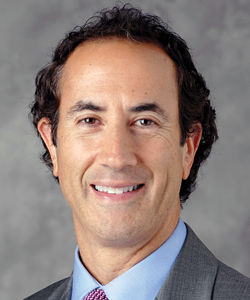Current estimates show that allergic rhinitis (AR) is the most common chronic disease among children in the United States. Ranking as the fifth most common chronic disease in the U.S. overall, AR has been estimated to generate $2 to $5 billion in direct health expenditures annually. Numerous diagnostic tests and treatments are used to manage patients with AR, but research suggests that there is considerable variation in how they are used by clinicians who care for these patients.
Providing Guidance
In order to help optimize the care of patients with AR, the American Academy of Otolaryngology-Head and Neck Surgery published a clinical practice guideline on AR in Otolaryngology-Head and Neck Surgery. “The primary goals of the guideline are to address quality improvement opportunities by evaluating the available evidence and assessing the harm-benefit balance of various diagnostic and management options,” says Michael D. Seidman, MD, FACS, lead author of the guideline.
To create the guideline, a diverse group of 20 panel members examined 31 clinical practice guidelines, 390 systematic reviews, and 1,605 randomized controlled trials to develop 14 key action statements, which are summarized below:
- Clinicians should make a clinical diagnosis of AR when patients present with a history and physical examination consistent with an allergic cause and one or more of the following symptoms: nasal congestion, runny nose, itchy nose, or sneezing.
- Clinicians should perform and interpret, or refer to a clinician who can perform and interpret, specific IgE (skin or blood) allergy testing for patients with a clinical diagnosis of AR who do not respond to empiric treatment or when the diagnosis is uncertain or when knowledge of the specific causative allergen is needed to target therapy.
- Clinicians should not routinely perform sinonasal imaging in patients presenting with symptoms consistent with a diagnosis of AR.
- Clinicians may advise patients to avoid known allergens or advise them about environmental controls when identified allergens correlate with clinical symptoms.
- Clinicians should assess patients with a clinical diagnosis of AR for the presence of associated conditions, such as asthma, atopic dermatitis, sleep-disordered breathing, conjunctivitis, rhinosinusitis, and otitis media. This information should be documented in the medical record.
- Clinicians should recommend intranasal steroids for patients with a clinical diagnosis of AR whose symptoms affect their quality of life.
- Clinicians should recommend oral second-generation/less sedating antihistamines for patients with AR and primary complaints of sneezing and itching.
- Clinicians may offer intranasal antihistamines for patients with seasonal, perennial, or episodic AR.
- Clinicians should not offer oral leukotriene receptor antagonists as primary therapy for patients with AR.
- Clinicians may offer combination pharmacologic therapy in patients with AR who have inadequate responses to pharmacologic monotherapy.
- Clinicians should offer, or refer to a clinician who can offer, immunotherapy for patients with AR who have inadequate responses to symptoms with pharmacologic therapy with or without environmental controls.
- Clinicians may offer, or refer to a surgeon who can offer, inferior turbinate reduction in patients with AR with nasal airway obstruction and enlarged inferior turbinates who have failed medical management.
- Clinicians may offer acupuncture, or refer to a clinician who can offer acupuncture, for patients with AR who are interested in non-pharmacologic therapy.
- No recommendation is made regarding use of herbal therapy for patients with AR.
Important Considerations
Dr. Seidman notes that some clinicians may be inclined to order confirmatory testing for a diagnosis of AR in patients who appear to have allergic symptoms. “Physicians may be surprised by our recommendation to start therapy with a nasal steroid in patients with a strong history of AR or symptoms consistent with a diagnosis of AR before testing them,” he says. “Testing can be expensive. Many physicians also chose to obtain CT scans or x-rays of the sinuses to confirm AR in congested patients. Clinicians may also be surprised by our recommendation against routinely performing sinonasal imaging in patients presenting with symptoms consistent with a diagnosis of AR. The rationale behind this recommendation is that limiting imaging can help avoid unnecessary radiation exposure, decrease costs, and reduce variations in care.”
The lack of a recommendation regarding herbal therapy is the result of little evidence on the subject matter, according to Dr. Seidman. “Our literature review showed many herbal remedies had some effect in patients with AR, but the literature wasn’t strong enough to sway the 20-member guideline task force,” he says.
The guideline task force also was unable to agree on a simple algorithm for treating AR. This was due to the fact that patients will vary with regard to preferences, severity of symptoms, duration of symptoms, coexisting conditions, and allergen sensitizations. Instead, the guideline writers provided guidance for clinicians using illustrative clinical scenarios that are consistent with available evidence and expert advice (Figure). “Clinicians should recognize that there’s a strong role for patient preferences in the management of AR,” says Dr. Seidman.
The guidelines are meant to guide appropriate care from a general perspective rather than dictate care on an individual basis, Dr. Seidman notes. “Clinicians should try to adhere to the guidelines within reason and refrain from imaging and testing all patients suspected of having AR,” he says.



 PWeekly
PWeekly